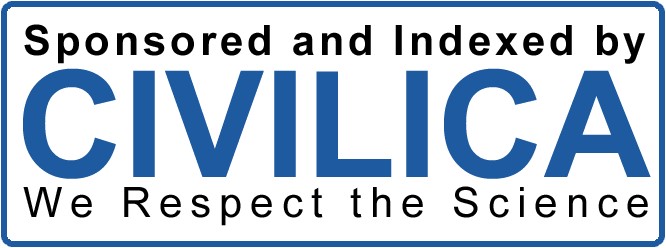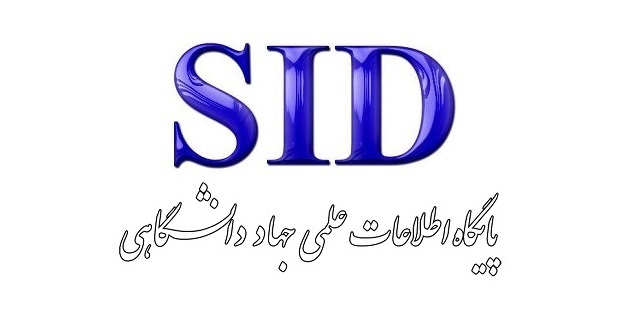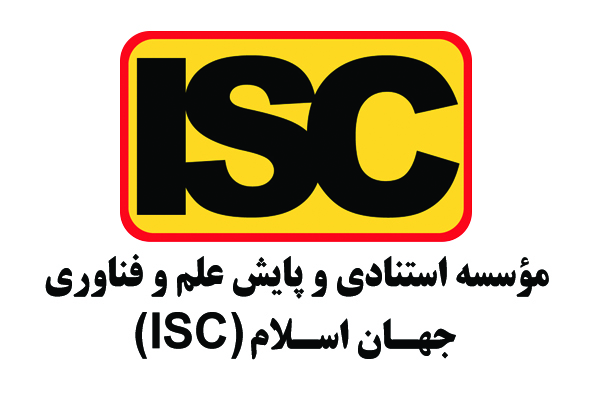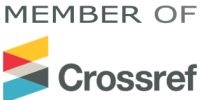طراحی مدل بهبود پرتفولیوی سرمایهگذاری بانک با تأکید بر فرآیند مدیریت ریسک بر اساس شاخصهای بانکداری دیجیتال (مطالعه موردی بانک رفاه)
کلمات کلیدی:
بهبود پرتفولیوی, سرمایهگذاری بانک, مدیریت ریسک, بانکداری دیجیتالچکیده
هدف پژوهش طراحی مدل بهبود پرتفولیوی سرمایهگذاری بانک با تأکید بر فرآیند مدیریت ریسک بر اساس شاخصهای بانکداری دیجیتال بود. پژوهش حاضر از حیث هدف پژوهش کاربردی و از حیث روش، کیفی با رویکرد نظریه داده بنیاد بود. در این پژوهش زاویه بندی روش شناختی با استفاده از روشهای مختلف گردآوری دادهها نظیر روش مطالعه کتابخانهای و بررسی منابع و متون تخصصی و همچنین مصاحبه نیمه ساختاریافته رعایت گردید. براساس نمونه گیری هدفمند، 18 نفر از مدیران و خبرگان بانک رفاه در سال (1402)، مورد مصاحبه قرار گرفتند. مصاحبههای انجام شده در نرم افزار ATLAS.TI کدگذاری شدند. برای تائید نتایج به دست آمده براساس سه سویه سازی، دادهها مورد ارزیابی و تحلیل روایی قرار گرفتند. یافتههای پژوهش در پنج مقوله شرایط علی، زمینهای، مداخله گر، راهبرد و پیامدها در چهار دسته فردی، گروهی، سازمانی و اجتماعی به تفکیک مشخص شدند. یک مدل در 6 مقوله، 19 کد محوری براساس 85 کد باز شناسایی شد. در طراحی مدل بهبود پرتفولیو سرمایهگذاری بانک با تأکید بر فرآیند مدیریت ریسک، استفاده از شاخصهای بانکداری دیجیتال از اهمیت بسیاری برخوردار است. این شاخصها، مفاهیم اصلی مرتبط با عملکرد بانک در حوزههای مختلف را اندازهگیری میکنند و به عنوان ابزارهای موثری در بهبود عملکرد و کاهش ریسک مالی مورد استفاده قرار میگیرند. با تحلیل دادههای به دست آمده به صورت دورهای و بازبینی مداوم شاخصهای بانکداری دیجیتال، مدل باید توانایی پیشبینی تغییرات در بازار و تطابق با نیازهای مشتریان را داشته باشد. این استمرار به کمک بهینهسازی مداوم پرتفولیو و تطابق با متغیرهای مختلف محیط کسب و کار، به حفظ و بهبود عملکرد سرمایهگذاری بانک کمک خواهد کرد.
دانلودها
مراجع
Alinejadi, B., Sarlak, A., & Kiani, K. (2022). Investigating the Role of Electronic Devices in Banking Costs. Environmental
Energy and Economic Research, 6, 1-18. https://www.eeer.ir/article_148212_a8981510a588f0fc8268a1f23e4c0341.pdf
Bertin, C., & Schaeffer, V. (2020). Organizational impact of digital open innovation in retail banks: Managing external and
internal pressure. In Managing Digital Open Innovation (pp. 299-324). https://doi.org/10.1142/9789811219238_0011
Cao, T., Cook, W. D., & Kristal, M. M. (2022). Has the technological investment been worth it? Assessing the aggregate
efficiency of non-homogeneous bank holding companies in the digital age. Technological Forecasting and Social Change,
https://doi.org/10.1016/j.techfore.2022.121576
Georgescu, I., & Kinnunen, J. (2021). The Digital Effectiveness on Economic Inequality: A Computational Approach. In
Business Revolution in a Digital Era (pp. 23). Springer. https://doi.org/10.1007/978-3-030-59972-0_16
Ghasemi, Z., Afshar Kermani, M., & Allahviranloo, T. (2021). Exploring the Main Effect of e-Banking on the Banking Industry
Concentration Degree on Predicting the Future of the Banking Industry: A Case Study. Advances in Fuzzy Systems.
https://doi.org/10.1155/2021/8856990
Gómez, J. A., Arévalo, J., Paredes, R., & Nin, J. (2018). End-to-end neural network architecture for fraud scoring in card
payments. Pattern Recognition Letters, 105, 175-181. https://doi.org/10.1016/j.patrec.2017.08.024
Heidarzadeh Aghdam, N. (2021). Presenting a risk management model in digital banking - A rational approach. Investment
Knowledge, 37, 489-515. http://www.jik-ifea.ir/article_17120_en.html?lang=en
Irfan, M., Elavarasan, R. M., Ahmad, M., Mohsin, M., Dagar, V., & Hao, Y. (2022). Prioritizing and overcoming biomass
energy barriers: Application of AHP and G-TOPSIS approaches. Technological Forecasting and Social Change, 177.
https://doi.org/10.1016/j.techfore.2022.121524
Josheski, D., & Boshkov, T. (2022). Monetary economics: Post-Keynesian Stock-Flow Consistent approach (PK-SCF) versus
New-Keynesian Dynamic Stochastic General Equilibrium (NK-DSGE). SSRN Electronic Journal.
https://doi.org/10.2139/ssrn.3998312
Kamdjoug, J. R. K., Wamba-Taguimdje, S. L., Wamba, S. F., & Kake, I. B. E. (2021). Determining factors and impacts of the
intention to adopt mobile banking app in Cameroon: Case of SARA by afriland First Bank. Journal of Retailing and
Consumer Services, 61. https://doi.org/10.1016/j.jretconser.2021.102509
Kanungo, R. P., & Gupta, S. (2021). Financial inclusion through digitalisation of services for well-being. Technological
Forecasting and Social Change, 167. https://doi.org/10.1016/j.techfore.2021.120721
Kitsios, F., Giatsidis, I., & Kamariotou, M. (2021). Digital Transformation and Strategy in the Banking Sector: Evaluating the
Acceptance Rate of E-Services. Journal of Open Innovation: Technology, Market, and Complexity, 7(204).
https://doi.org/10.3390/joitmc7030204
Niemand, T., Rigtering, J. P. C., Kallmünzer, A., Kraus, S., & Maalaoui, A. (2021). Digitalization in the financial industry: A
contingency approach of entrepreneurial orientation and strategic vision on digitalization. European Management Journal,
, 317-326. https://doi.org/10.1016/j.emj.2020.04.008
Paiva, B. M., Ferreira, F. A., Carayannis, E. G., Zopounidis, C., Ferreira, J. J., Pereira, L. F., & Dias, P. J. (2021). Strategizing
sustainability in the banking industry using fuzzy cognitive maps and system dynamics. International Journal of
Sustainable Development and World Ecology, 28(2), 93-108. https://doi.org/10.1080/13504509.2020.1782284
Potapova, E. A., Iskoskov, M. O., & Mukhanova, N. V. (2022). The Impact of Digitalization on Performance Indicators of
Russian Commercial Banks in 2021. Journal of Risk and Financial Management, 15, 452.
https://doi.org/10.3390/jrfm15100452
Sandhu, S., & Arora, S. (2020). Customers' usage behaviour of e-banking services: Interplay of electronic banking and
traditional banking. International Journal of Finance & Economics. https://doi.org/10.1002/ijfe.2266
Sawhney, A., & Ahuja, V. (2021). Drivers of social media content marketing in the banking sector: A literature review.
International Journal of Service Science, Management, Engineering, and Technology, 12, 54-72.
https://doi.org/10.4018/IJSSMET.2021050104
Starodubtseva, E. B., Grachyova, M. V., & Trachenko, M. B. (2021). Digitalization as a driver of the banking sector. In
StudSystDecisControl (Vol. 314, pp. 607-613). https://doi.org/10.1007/978-3-030-56433-9_63
Úbeda, F., Forcadell, F. J., Aracil, E., & Mendez, A. (2022). How sustainable banking fosters the SDG 10 in weak institutional
environments. Journal of Business Research, 146, 277-287. https://doi.org/10.1016/j.jbusres.2022.03.065
Yu, Y. (2019). A preliminary exploration on stochastic dynamic asset allocation models under a continuous-time sticky-price
general equilibrium. Applied Economics, 51(4), 373-386. https://doi.org/10.1080/00036846.2018.1497851
Zakari, A., Toplak, J., Ibtissem, M., Dagar, V., & Khan, M. K. (2021). Impact of Nigeria's industrial sector on level of
inefficiency for energy consumption: Fisher Ideal index decomposition analysis. Heliyon, 7.
دانلود
چاپ شده
شماره
نوع مقاله
مجوز
حق نشر -1 تکنولوژی در کارآفرینی و مدیریت استراتژیک

این پروژه تحت مجوز بین المللی Creative Commons Attribution-NonCommercial 4.0 می باشد.











